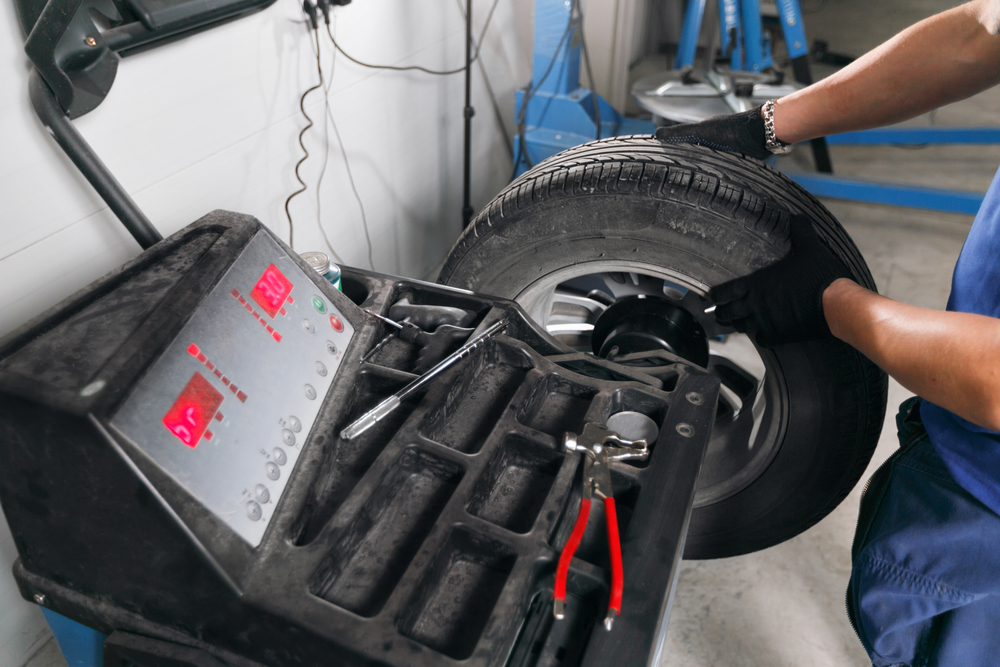Only 11-percent of drivers check their tires’ inflation pressure on a monthly basis, so it stands to reason that an even smaller percentage bother themselves with making sure their tires remain perfectly balanced. But just like correct inflation pressure, regular tire rotations and precise alignment, periodically balancing your tires is a part of proper tire maintenance. When new, during rotation intervals and certainly any time a vibration is detected, your tires should be inspected for proper balance.
With curbed rims, lost counterweights, flat spotting and tire-to-wheel slippage all being common occurrences in everyday driving, it doesn’t take much to disrupt the perfect balance your tire and wheel assemblies had when they were brand-new.
For everything you ever wanted (and needed) to know about balancing, the information below is intended to help you get the best ride quality, longest tread wear and optimum safety out of your tires.
First and foremost, you have to start with a quality tire that possesses sound uniformity. Uniformity refers to how even and round a tire is manufactured. When you combine a tire that has quality uniformity with a good balance job, you’ll benefit from even weight distribution and optimum wear characteristics right from the outset.
You’d be surprised at just how easily a tire can become imbalanced. For example, a hard skid in a panic-brake situation can flat spot a tire. With the tire no longer perfectly round, it’s likely to add a vibration to your driving experience. A bent rim or the loss of a counterweight are other common causes of imbalance. Aggressive acceleration or braking can result in tire-to-rim slippage, which also affects balance. Some of the above scenarios aren’t always avoidable in normal driving, which makes it all the more important to check for proper balance anytime you rotate or experience a vibration while driving your vehicle. The photo above was sourced from High Velocity Diesel Performance, whose Ford Excursion was hit by another vehicle and suffered a bent rim (among other damages).
For example, a hard skid in a panic-brake situation can flat spot a tire. With the tire no longer perfectly round, it’s likely to add a vibration to your driving experience. A bent rim or the loss of a counterweight are other common causes of imbalance. Aggressive acceleration or braking can result in tire-to-rim slippage, which also affects balance. Some of the above scenarios aren’t always avoidable in normal driving, which makes it all the more important to check for proper balance anytime you rotate or experience a vibration while driving your vehicle. The photo above was sourced from High Velocity Diesel Performance, whose Ford Excursion was hit by another vehicle and suffered a bent rim (among other damages).
It goes without saying that an imbalanced tire yields uncomfortable ride quality, but in addition to the vibration sensation that typically accompanies an out of balance tire the affected tire’s handling characteristics are compromised as well. This includes steering. All it takes is one half of an ounce of weight difference on any given tire to bring about considerable vibration.
This includes steering. All it takes is one half of an ounce of weight difference on any given tire to bring about considerable vibration.
An out of balance tire can lead to increased and uneven tread wear. This is especially true for tires that are improperly inflated or not regularly rotated. However, excessive tread wear can also be traced back to a poor balance job from the tire shop. If left unchecked, uneven wear can produce vibrations that not only worsen over time, but that also increase the chance of the tire blowing out.
We’ve all passed a vehicle on the interstate that was noticeably equipped with out of balance tires and many of us have even experienced tire imbalance through the steering wheel. There are two primary forms of tire imbalance: static and dynamic. In instances of static imbalance, a vertical vibration or hop is present. Dynamic imbalance entails side-to-side vibration or wobbling (which is distinctly felt in the steering wheel).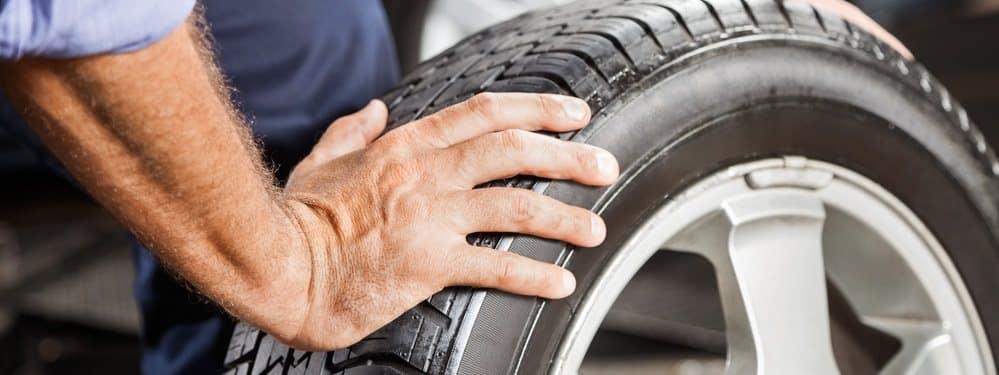 Proper tire balancing can solve and counteract the forces that cause these vibrations, which usually conspire at the same time.
Proper tire balancing can solve and counteract the forces that cause these vibrations, which usually conspire at the same time.
On a balancing machine, your tire professional runs each wheel and tire assembly up to high speed in what’s known as the dynamic balance procedure to pinpoint its heaviest point. From there, clip-on counterweights (measured in ounces) are added to the lip of the wheel to redistribute the weight of the assembly evenly. We’ll note that adhesive counterweights are used when clip-on versions can’t be, but are sometimes used in addition to the traditional clip-on counterweights.
To maintain the aesthetics of certain vehicles with aftermarket wheels, many enthusiasts request that the counterweights be installed on the inboard side of the wheel rather than the outside, so long as precise balance can still be achieved. On wheels void of a lip to accommodate a conventional clip-on counterweight or that have delicate finishes, the aforementioned adhesive counterweights can be employed.
A well-executed balancing procedure leads to equal weight and force distribution across the tire and wheel assembly, which eliminates vibration and results in the smooth, comfortable ride we’re all after when driving. In addition to optimum ride quality, a well-balanced set of tires facilitates even tread wear, maximizes fuel economy and leads to a safer, more stable overall driving experience.
This is the one most folks either overlook completely or hardly ever inquire about. For the majority of the tires rolling across America, they’re balanced once in their lifetime. However, proper tire maintenance dictates that tires should be inspected and re-balanced if necessary at each rotation interval. And at the very least, they should be checked for imbalances any time you experience a vibration.
It’s important to know that just because you don’t feel a vibration in the steering wheel doesn’t mean there isn’t one. When a tire is out of balance on a minute level, it can be hard to detect by the seat of your pants. Regular trips onto the balancing machine can catch an imbalance before it becomes a bigger problem. We know you’re busy, but it only takes a few minutes for a competent tire technician to perform a balance test. Think of it as a quick adjustment, an adjustment that will protect your tire investment by making them last as long as you expect them to. Of course, ensuring your tires remain perfectly in balance will guarantee you continue to enjoy a smooth ride and optimal handling as well.
When a tire is out of balance on a minute level, it can be hard to detect by the seat of your pants. Regular trips onto the balancing machine can catch an imbalance before it becomes a bigger problem. We know you’re busy, but it only takes a few minutes for a competent tire technician to perform a balance test. Think of it as a quick adjustment, an adjustment that will protect your tire investment by making them last as long as you expect them to. Of course, ensuring your tires remain perfectly in balance will guarantee you continue to enjoy a smooth ride and optimal handling as well.
In case you were wondering, there’s a lot more to rotating your tires than meets the eye. Learn about your specific vehicle’s proper inflation pressure, rotation pattern and the best way to keep tabs on tread wear right here.
Tire balancing is a tune-up for your wheel-tire set. It makes sure that weight is evenly distributed around the entire circumference of the unit. The common symptoms of out-of-balance tires are uneven and faster tread wear, poor fuel economy, and vibration in the steering wheel, the floorboard or the seat that gets worse at faster speeds.
The common symptoms of out-of-balance tires are uneven and faster tread wear, poor fuel economy, and vibration in the steering wheel, the floorboard or the seat that gets worse at faster speeds.
When all areas of the wheel-tire unit are as equal in weight as possible, the tire will roll smoothly. This helps it wear evenly, for longest life. Balancing also contributes to ride comfort: Imbalanced tires will wobble or hop up and down, which causes vibration. If a front tire isn’t properly balanced you’ll likely feel vibration in the steering wheel. If the problem is in the rear the tremor will be noticeable in the seat or floor.
Imbalanced tires are easily corrected, but the work is precise. It’s done by attaching small weights, just fractions of ounces, to the wheel.
Everyday wear on tires will contribute to imbalance. Normal manufacturing imperfections are also a cause: Tires and wheels don’t have precisely equal weight distribution. They’ll be slightly heavier in some spots.
They’ll be slightly heavier in some spots.
Just half an ounce in weight difference is enough to cause a vibration when you’re driving.
Rebalancing is done in a tire shop by putting the wheel-tire unit on a tire balancing machine that takes measurements to pinpoint lighter or heavier areas and making adjustments to account for these weight differences. The best time to get it done is when tires are being rotated, both for convenience and because you might have a tire out of balance on the rear of the vehicle and won’t feel it until it is moved to the front.
Here’s how it’s done:
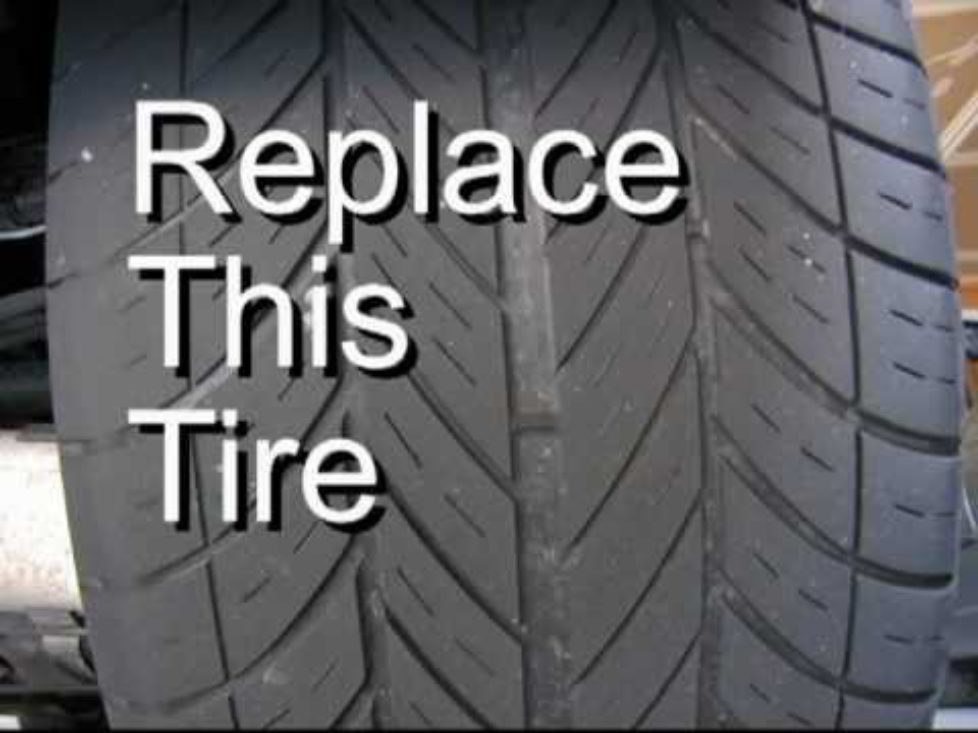 But sometimes it requires the tech to also move the tire on the wheel and then rebalance. This is because a heavy spot on the wheel and on the tire can sometimes line up together, causing a greater imbalance that needs to be corrected.
But sometimes it requires the tech to also move the tire on the wheel and then rebalance. This is because a heavy spot on the wheel and on the tire can sometimes line up together, causing a greater imbalance that needs to be corrected.Though both should be part of regular auto maintenance, balancing isn’t the same as getting an alignment. Wheel alignment corrects the angles of the tires so they travel in the same direction and make contact with the road properly. Alignment reduces uneven tire wear and extends the life of your tires. Oftentimes tire balancing and alignment are perceived to be the same thing, but are not.

Tire balancing and rotation are often done at the same time, but they aren’t the same service. Tire rotation is when a vehicle’s front and rear wheels are switched to even out tread wear between them. Since both require removing each wheel, it’s convenient to do them at the same time.
Vibration when underway could be caused by an imbalanced tire and wheel assembly or something else — a bent wheel, a damaged tire (which won’t be fixed by balancing), worn suspension parts or other aging components. If you feel a vibration, don’t wait to get it diagnosed. You’ll head off other problems — and enjoy a smoother ride — when your tires are well balanced.
Schedule an Appointment
An important point in the operation of the car is wheel balancing.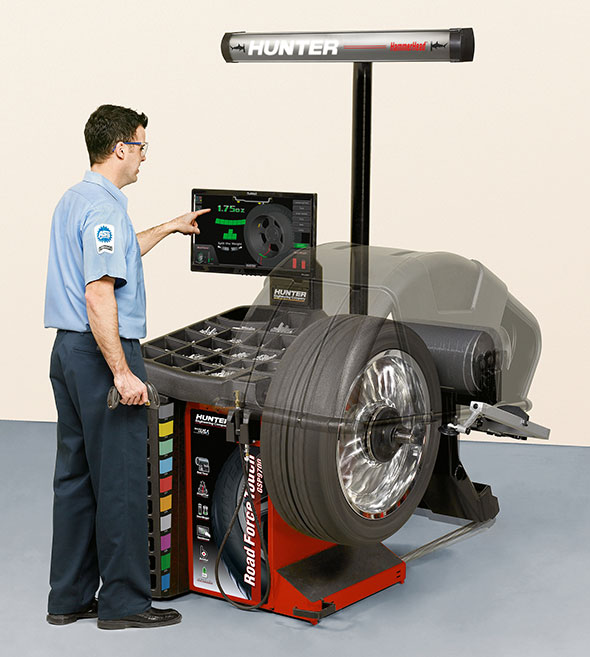 Thanks to this operation, it is possible to eliminate the imbalance that occurs for a number of reasons. Novice motorists are mistaken in believing that it is enough to balance the wheels once during a tire change. Unfortunately, it is required to visit a tire fitting much more often, because the loads on the wheels during the operation of the machine can lead to their imbalance over time.
Thanks to this operation, it is possible to eliminate the imbalance that occurs for a number of reasons. Novice motorists are mistaken in believing that it is enough to balance the wheels once during a tire change. Unfortunately, it is required to visit a tire fitting much more often, because the loads on the wheels during the operation of the machine can lead to their imbalance over time.
Contents of the article:
Despite the constant improvement in the quality of car tires, it has not yet been possible to achieve the perfect balance of rubber during manufacture. Yes, and the disks contribute to the imbalance of the entire wheel structure.
Specialists distinguish between static and dynamic types of wheel imbalance. They are successfully eliminated by hanging special balancing weights on the disk. Some car owners require that the weight be glued to the inner surface of the rim so as not to spoil the visual appeal of the wheels. However, in some cases, to eliminate the imbalance, one has to make sacrifices and stuff weights on the edge of the disk.
Some car owners require that the weight be glued to the inner surface of the rim so as not to spoil the visual appeal of the wheels. However, in some cases, to eliminate the imbalance, one has to make sacrifices and stuff weights on the edge of the disk.
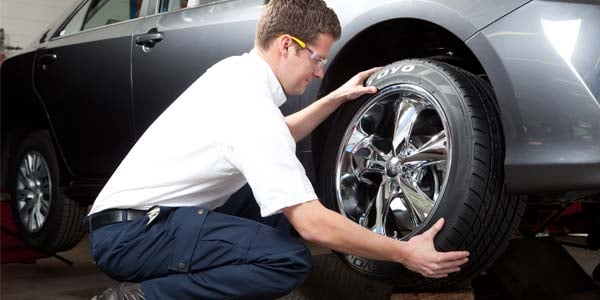 Typically, this type of imbalance is observed in wide-profile wheels.
Typically, this type of imbalance is observed in wide-profile wheels. There are a few important things a tire fitter should consider when balancing. This will reduce the risk that the motorist will have to visit the car service unscheduled due to compensating weights lost during the operation of the car. The sequence of balancing work should be as follows:
Beginning car enthusiasts should be aware that putting decorative caps and other accessories on a balanced wheel can cause imbalance.
The number of visits to a tire shop for wheel balancing directly depends on the frequency and accuracy of using the car in everyday life. The starting point is considered to be a mark of 10-15 thousand km. mileage if the car is moving on good roads. Most automakers recommend sticking to these numbers. However, ideal road surfaces are not yet found everywhere. Here are some useful tips on the topic to listen to:
 Fans of aggressive driving should check the condition of the wheels after 7-8 thousand km.
Fans of aggressive driving should check the condition of the wheels after 7-8 thousand km. Delaying wheel balancing is quite dangerous. In the presence of an imbalance, uneven and accelerated wear of the tread occurs. A strong runout of the wheels also negatively affects the details of the suspension, steering mechanism and brake system. Therefore, taking care of the wheels should be another item on the list of car maintenance.
Car tires, despite their apparent simplicity, have many features and nuances. For best performance, it must be installed correctly. An important procedure is wheel balancing. It's worth figuring out what it is.
Balancing refers to the procedure for correcting imbalances between the wheel, hub and other suspension components. Since centrifugal forces act on the rim together with the tire, it is necessary to do this work with a certain period of time.
Since centrifugal forces act on the rim together with the tire, it is necessary to do this work with a certain period of time.
Almost always, the geometric center of gravity of the wheel does not coincide with the axis of rotation. The reason is the heterogeneity of the elements, first of all, we are talking about the irregular shape of the rim, some imbalance of the tire. This leads to beating during movement and other unpleasant consequences.
The first attempts to balance the wheels were made in the 30-40s of the last century. Then motor sportsmen tried to pour water into the tire chambers, sometimes they used sand and other bulk substances. But, it soon became clear that such auto-balancing is useless, since the balancing substance is located at the far point of the circle. That is, balancing simply does not occur.
The first balance similar to the current one was used in 1954. Moreover, the wheels of railway cars were balanced. Only after the successful application of fat-on weights on the railway, manufacturers of automobile wheels became interested in the technology. The first information about the use of balancing on cars dates back to 1959.
The first information about the use of balancing on cars dates back to 1959.
It is important for the driver to understand whether it is necessary to balance the wheels, which will minimize difficulties with the suspension, as well as improve the comfort of travel. In general, it is recommended to check the parameter without even waiting for obvious signs of imbalance. Be sure to check and diagnose the disk in the following cases.
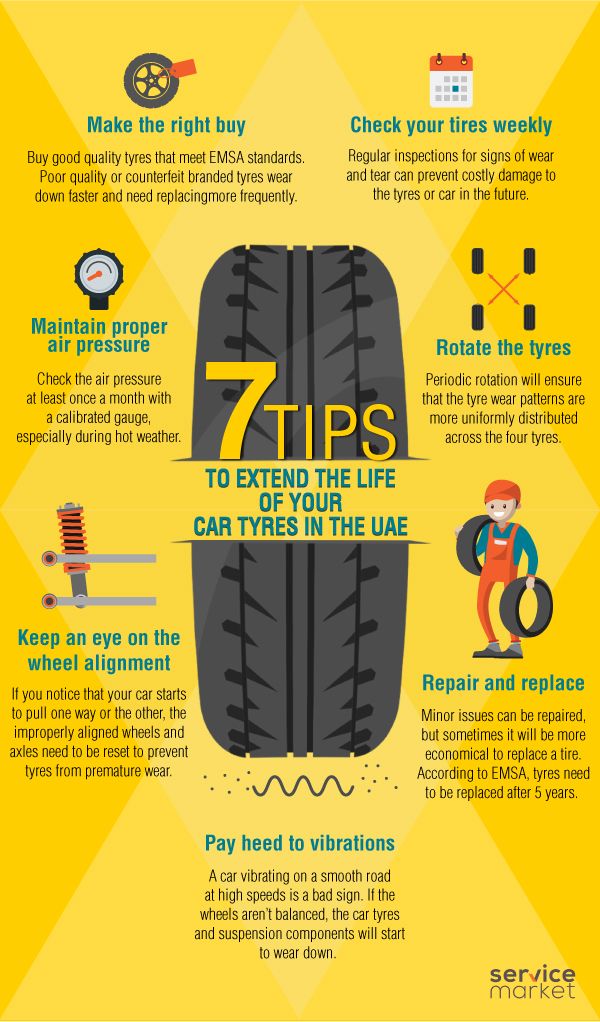
Do not forget about this work. The quality of the wheels is an important parameter that ensures traffic safety.
There are a number of signs that indicate the presence of an imbalance. Let's consider them in more detail, this can help in identifying a malfunction.

There are many signs, it is important to track them in a timely manner.
Do not confuse vibration when driving and when braking. If there is vibration during braking, the cause is not the balance of the wheel, but the wear of the brake pads.
Sometimes drivers wonder if wheel balancing is necessary or if this work can be done without. In fact, imbalance can lead to a whole host of problems.
 Since the contact patch is unstable, slippery roads increase the risk of losing control of the vehicle.
Since the contact patch is unstable, slippery roads increase the risk of losing control of the vehicle. The points listed above are the most basic consequences of a wheel imbalance. But, even this is enough to understand how important it is to carry out work to restore the balance of the rim in a timely manner.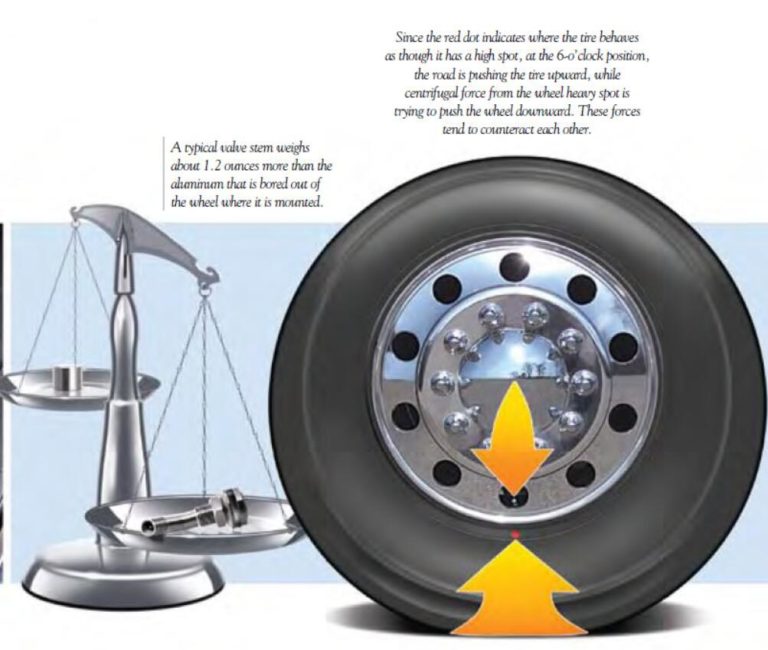
Separately, it is worth considering how the adjustment is made. The parameter is leveled with the help of weights that are attached to the rim, or rather, to its rim. Weights are of the following types.
A special machine is required to adjust the parameter. Most often, a machine is used for rough adjustment. The master spins the wheel on the axle and, by placing the weight, achieves the most even rotation. When performing work, a great experience of a specialist is required.
Fine balancing is done on an electronic machine.